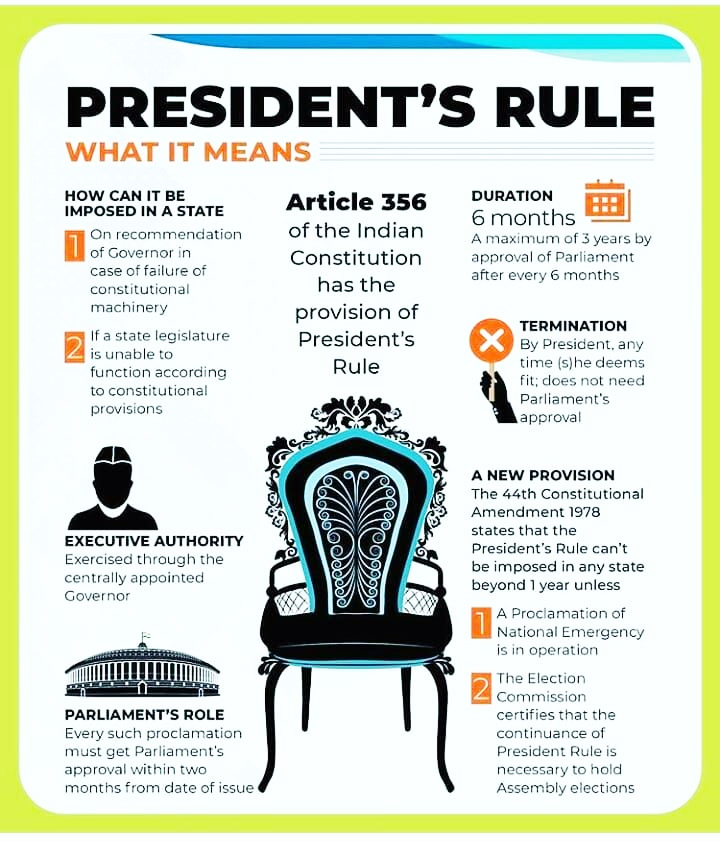States Demand to Declare Lightning as a Natural Disaster
Recently few States have demanded that “lightning” be declared as a “natural disaster” because deaths caused by it surpass any other disaster in India.
According to present norms, cyclone, drought, earthquake, fire, flood, tsunami, hailstorm, landslide, avalanche, cloudburst, pest attack, frost and cold waves are considered as disasters that are covered under the State Disaster Response Fund (SDRF), 75% of which is funded by the Centre.
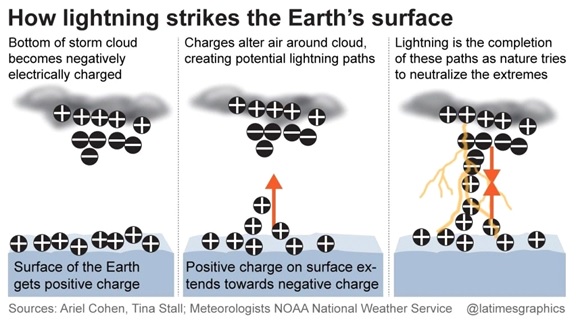
What is Lightning?
It is the natural process of "an electrical discharge of very little duration and high voltage between a cloud and the ground or within a cloud," accompanied by a bright flash, a loud sound, and occasionally thunderstorms.
Cloud-to-ground (CG) lightning is dangerous because it can electrocute people due to its high electric voltage and current. Inter- or intra-cloud lightning is visible and safe.
Process of Lightning:
- Lightning is caused by a difference in electrical charge between the top and bottom of a cloud, which generates a huge current of electricity.
- Water vapor in the cloud condenses and rises, generating heat and pushing water molecules further up until they become ice crystals. Collisions between the ice crystals trigger the release of electrons, leading to a chain reaction that results in a positively charged top layer and negatively charged middle layer in the cloud.
- When the difference in charge becomes large enough, a huge current of electricity flows between the layers, producing heat that causes the air column to expand and produce shock waves that create thunder sounds.
Lightning and the Climate Change:
In a 2015 study from California University, the university cautioned that a rise in one degree Celsius would result in a 12% increase in the frequency of lightning strikes.
Another study that was released in Geophysical Research Letters in March 2021 found connections between climate change and an increase in lightning strikes in the Arctic.
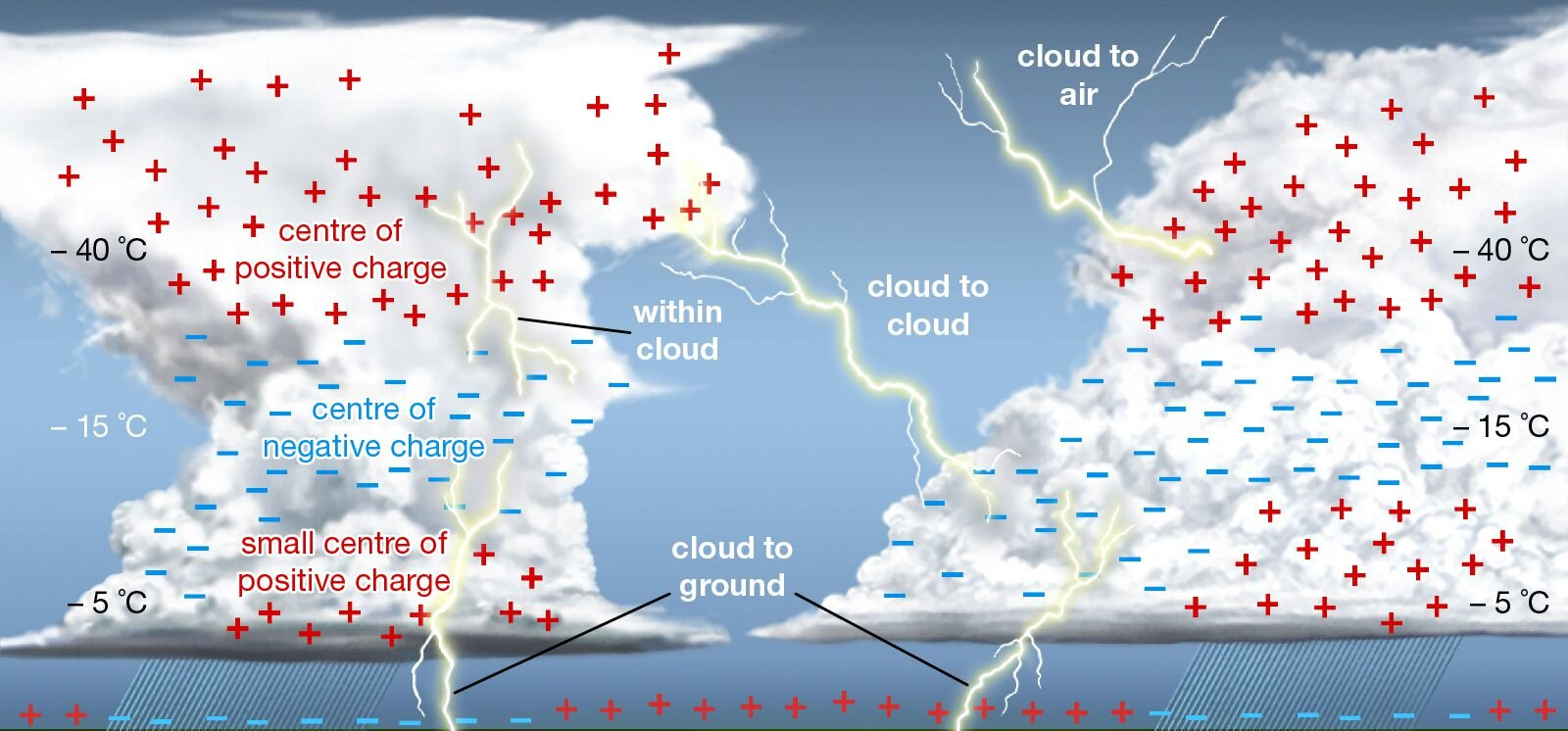
Lightning Strikes in India:
- According to a newly published yearly report on lightning from the Lightning Resilient India Campaign (LRIC), India may have seen up to 18.5 million lightning strikes between April 2020 and March 2021.
- Each year, lightning claims the lives of more than 2,500 Indians.
- According to a study by the Delhi-based RMSI, a global leader in geospatial and engineering solutions, Odisha, Madhya Pradesh, Chhattisgarh, West Bengal, and Jharkhand have witnessed the maximum lightning strikes in recent years.
- According to government statistics, more than 100,000 individuals have died in the nation as a result of lightning strikes between 1967 and 2019. This represents more than a third of the deaths brought on by natural disasters throughout this time.
Way Forward
- Early Warning Systems: To warn people of impending thunderstorms and lightning strikes, India should invest in early warning systems. Weather radar, lightning detection networks, and smartphone applications are a few examples of these systems.
- Lightning Safety Measures: It is important to inform India's rural communities about quick and easy lightning safety precautions. This can involve putting lightning rods on homes, staying indoors during thunderstorms, and taking cover in secure structures.
- Research and Development: To better understand lightning and discover creative ways to lower the risk, the Indian government should support research and development projects.

Environment, Social and Governance (ESG) and India
People across the world are embracing the idea that business should be measured on the Environment, Social and Governance (ESG) metric, however ESG laws and Regulations are still at a nascent stage in India, and much further to go in this direction.
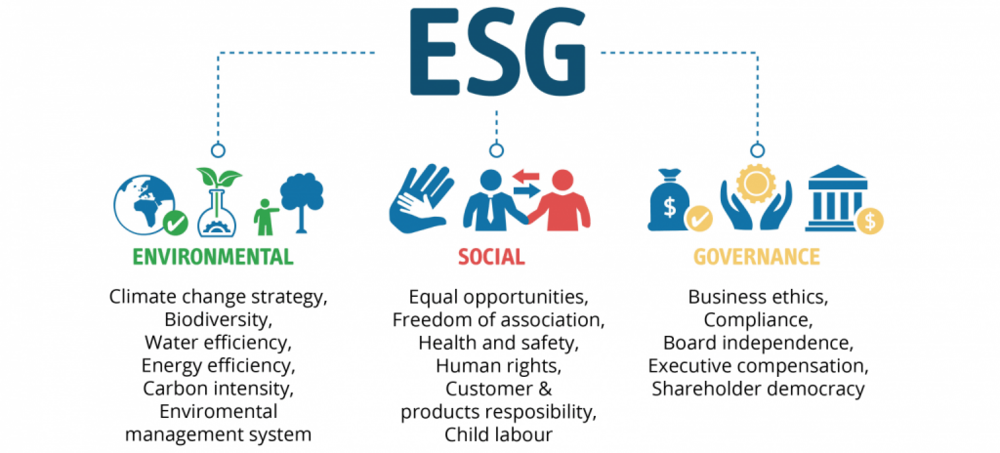
What is ESG?
- ESG goals are a set of standards for a company’s operations that force companies to follow better governance, ethical practices, environment-friendly measures and social responsibility.
- Environmental criteria consider how a company performs as a steward of nature.
- Social criteria examine how it manages relationships with employees, suppliers, customers, and the communities where it operates.
- Governance deals with a company’s leadership, executive pay, audits, internal controls, and shareholder rights.
- It focuses on non-financial factors as a metric for guiding investment decisions wherein increased financial returns is no longer the sole objective of investors.
- Ever since the introduction of the United Nations Principles for Responsible Investing (UNPRI) in 2006, the ESG framework has been recognised as an inextricable link of modern-day businesses.
Differing from CSR:
- India has a robust Corporate Social Responsibility (CSR) policy that mandates that corporations engage in initiatives that contribute to the welfare of society.
- This mandate was codified into law with the passage of the 2014 and 2021 amendments to the Companies Act of 2013.
- The amendments require companies in any given financial year to spend at least 2% of their net profit over the preceding three years on CSR activities.
- Whereas ESG regulations differ in process and impact.
What is the Need for ESG in India?
- India faces significant environmental challenges, including air and water pollution, deforestation, and climate change, also there are significant social challenges such as poverty, inequality, discrimination, and human rights abuses, making the importance of investing in companies that are committed to addressing these issues and promoting social justice.
- India has a complex regulatory and legal environment, and companies operating in India may face challenges related to corruption, regulatory compliance, and corporate governance. Therefore, there is an increasing need for recognizing the companies with strong governance practices to mitigate these risks.
What are the Challenges related to ESG Compliance in India?
Limited Awareness: Many companies in India may not be fully aware of the importance of ESG factors or may not have the resources to integrate ESG considerations into their business practices.
Inadequate Data: In India, there may be limited publicly available data on ESG factors for companies, making it difficult for investors to evaluate ESG performance and make informed investment decisions.
Weak Regulatory Environment: India's regulatory environment may not be fully developed or enforced to ensure ESG compliance by companies. This may lead to a lack of accountability and transparency in corporate practices.
Cultural Factors: India has a diverse cultural landscape, and some traditional business practices may not align with ESG principles. Companies may need to navigate these cultural factors to implement ESG policies effectively.
Limited ESG-focused Investment Options: Investors may have limited investment options that focus specifically on ESG factors in India, making it difficult to fully integrate ESG considerations into investment decision-making.
What Initiatives have been taken to Ensure ESG Compliance?
One of the initial milestones towards identifying ESG disclosure requirements for companies was the release of the National Voluntary Guidelines on Social, Environmental and Economic Responsibilities of Business (NVGs) in 2011 by the Ministry of Corporate Affairs (MCA).
- In 2012, the SEBI formulated the Business Responsibility Reports (BRR) which mandated top 100 listed entities (which was extended to top 500 listed entities in 2015) by market capitalization to file BRR as part of their annual report.
- In 2021, SEBI replaced the existing BRR reporting requirement with a more comprehensive integrated mechanism, the Business Responsibility and Sustainability Report (BRSR).
- It will be mandatorily applicable to the top 1,000 listed entities (by market capitalization) from FY 2022-23 onwards.
- The BRSR seeks disclosures from listed entities on their performance against the nine principles of the ‘National Guidelines on Responsible Business Conduct’ (NGBRCs).
Way Forward
- To promote ESG adoption in India, there needs to be increased awareness among companies, investors, and regulators about the importance of ESG factors for sustainable and responsible investing.
- Companies in India should provide more comprehensive and standardized disclosures on ESG factors to enable investors to evaluate their ESG performance more effectively.
- The regulatory environment in India should be strengthened to promote greater ESG compliance by companies. This could involve introducing more robust reporting requirements, establishing clearer ESG standards, and enforcing regulations more rigorously.
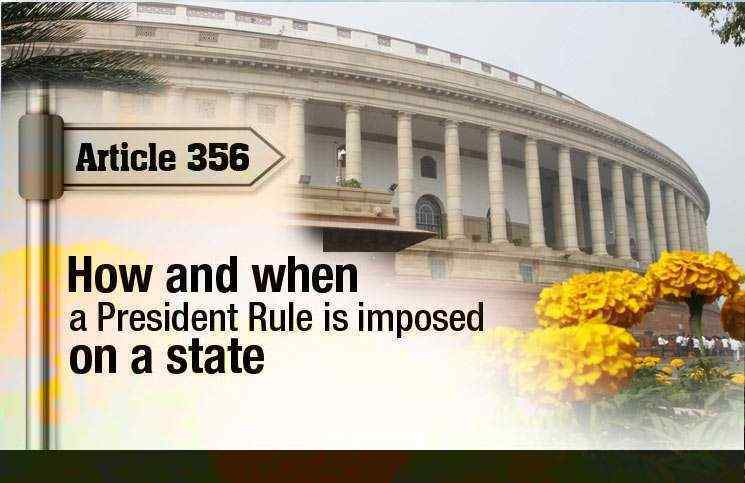
Article 356
Recently Prime Minister mentioned the misuse of Article 356 in the parliament.
Commonly known as President’s Rule, Article 356 allows the president to assume any and all functions of the state.
About Article 356:
- Section 93 of the Government of India Act, 1935
- Also called a ‘State Emergency’ or ‘Constitutional Emergency’.
- It deals with the ‘failure of constitutional machinery in the state’ and allows the president to assume any and all functions of the state.
- It can be imposed for six months at a time for a maximum duration of three years.
- After six months, Parliament’s approval is needed to reimpose President’s Rule.
- In 1978, the 44th Amendment to the Constitution (1978) was made.
- This stated that President’s Rule cannot be extended beyond one year unless:
- In case of a national emergency
- The Election Commission of India certifies that it is necessary due to difficulties in conducting Assembly polls.
- After President’s Rule is imposed, the governor of the state continues administering the state on behalf of the president. The governor can also take aid from the chief secretary and any other officials.
Issues with the use of Article 356:
Overuse and abuse in a politically motivated manner, especially by the central government to dismiss state governments run by opposition parties.
Subversion of democracy: It suspends the democratic process in a state
Lack of accountability: The frequent use of Article 356 has been seen as an infringement on the federal principles of the Indian Constitution and a diminution of the powers of the states.
Negative impact on governance: It can lead to administrative and governance breakdowns in a state
Recommendations to avoid misuse:
- The Sarkaria Commission in 1983 recommended it only be used in extreme cases.
- The Supreme Court in the landmark 1994 Bommai vs Union of India case, dealing with Article 356 outlined strict guidelines on dealing with the dismissal of a state government.
- For one, it made it mandatory for a no-confidence motion to be passed in the House.
- It also made President’s Rule subject to judicial review.
- The court held that Article 356 can be invoked in situations of the physical breakdown of the government or when there is a ‘hung assembly’, but that it cannot be used without giving the state government a chance to either prove its majority in the House or without instances of a violent breakdown of the constitutional machinery.
